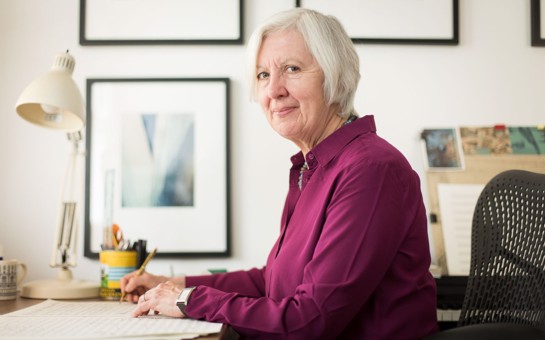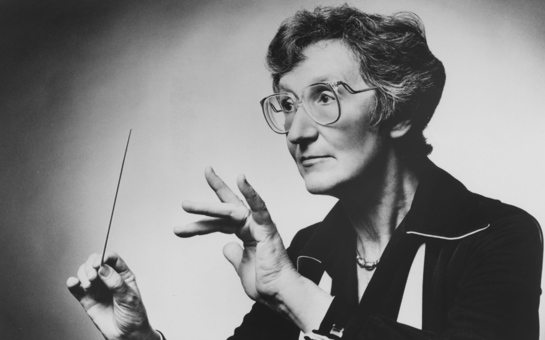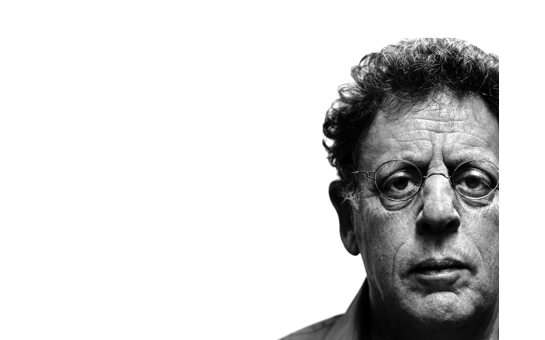The Seasons
1st October 2014

The seasons have always been an inspiring and timeless subject for artists of different fields: word, image and sound. Explore the seasons through music and find a selection of works for strings or chamber orchestra reflecting on various aspects of nature, change, cycles, time and life.
Works for Strings
Per Nørgård: Flyvende sommer (1992, 10’)
“’Fugitive Summer’ is a lyrical work. One might compare the three movements with the "Nordic summer", with its subdued and unstable features. In Danish, the words of the title (Flyvende Sommer) are identical to the popular name for the minuscule spiders with their almost invisible threads, seen as silver glimpses in the air on certain days when the new-born creatures seek their future by letting the wind take them wherever my spirit blew.” (Per Nørgård)
Works for Soloist(s) and String Orchestra
Philip Glass: Violin Concerto No 2 'American Four Seasons' (2009, 42’)
“Glass's Violin Concerto No 2 is subtitled The American Four Seasons. Written for Robert McDuffie as a Vivaldi companion piece, it links Glass's own minimalism to the classicism and neo-classicism of the 18th and 20th centuries respectively.” (Tim Ashley, The Guardian, 4/21/2010)
Max Richter: The Four Seasons Recomposed (2012, 44’)
Max Richter about recomposing Vivaldi’s original score: “The challenge was to ‘create a new score, an experimental hybrid, that constantly references “Vivaldi” but also “Richter” and that is current but simultaneously preserves the original spirit of this great work. In my notes you will find parts that consist of 90 per cent of my own material; but on the other hand you will find moments where I have only altered a couple of notes in Vivaldi’s original score and shortened, prolonged or shifted some of the beats. I literally wrote myself into Vivaldi’s score.” (Gramophone, 9/12/2012)
Works for Chamber Orchestra
Kaija Saariaho: Ciel d'hiver (2013, 10’)
The piece is an arrangement of the second movement of Saariaho’s orchestral piece “Orion” (2002). The world premiere took place on 7 April 2014 at the Théâtre du Châtelet, Paris.
Michael Gordon: Weather (1997, 1 h 2’)
“’Weather’ was commissioned by the Seimans Foundation for the German-based string orchestra, Ensemble Resonanz. Inspired by the chaotic scheme of Weather patterns, I wondered how these might transfer musically, as if the past several hundred years of musical ideas were swirling around, and I could just grab things I liked and build on them…
I imagined history as being not so much like a timeline, but like an elevator where I could stop at whatever floor I wanted, and everything was going on simultaneously. The elevator went up to eight, where I found Vivaldi, who of course wrote a massive string piece based loosely on the same subject. Then I went down to the fourth floor, where I found Jimi Hendrix, back up to nine for some 1990's London club music, then to five for the noise of battleship sirens. “ (Michael Gordon)
Thea Musgrave: The Seasons (1988, 22’)
The Academy of St Martin's in the Fields commissioned The Seasons in 1988. That year, they gave the first performance in the Royal Festival Hall, conducted by Sir Neville Marriner.
The idea for the work crystallised after a visit to the Metropolitan Museum of Art in New York. Piero di Cosimo’s Caccia Primitiva, a frightening image of fire and destruction built around a wild and gory hunt scene, gave rise to the idea that various pictures related to the four seasons could become a metaphor for the cycles in the life of man.
Judith Weir: Winter Song (2006, 17’)
The composer in her programme note: “Emotionally, the music was inspired by the idea of walking through the difficult days of winter, and the idea that simply keeping going, making some kind of forward motion, may lead to better times.
Artistically, I never forgot that the music was being written for two orchestras in Scotland and Finland. Thinking about the Scottish element brought the Scottish Chamber Orchestra itself to mind, an orchestra I’ve happily worked with over a very long time. The Finnish dimension inevitably invoked the inspiration of Sibelius. Here I was particularly thinking of his many musical references to nature in the margins of his Kalevala-based compositions; and the elegance and concision of the Seventh Symphony.”
Anthony Payne: Spring's Shining Wake (1982, 15’)
Anthony Payne in his programme note: “Spring’s Shining Wake … shadows the course of a late-romantic masterpiece – Delius’ ‘In a Summer Garden’ – without in any way quoting from it. …; It speaks of experiences, not only musical ones, that will probably never be repeated; the trace, or ‘wake’, left on the mind after Spring has passed. “
Samuel Adler: Summer Stock: A Short Merry Overture (1955, 5’)
The prevailing mood of this joyous overture is indicated by the composer's marking at the outset: "Lively and with good spirit." Adler captures the ardent enthusiasm of young actors pursuing their craft in summer stock with fanfares, solo brass passages, and vibrant rhythms throughout.
John La Montaine: A Summer’s Day; a Sonnet for Orchestra, op. 32 (1960, 5’)
Composed shortly after his first piano concerto won the Pulitzer Prize for Music, La Montaine's brief sketch draws its inspiration from Shakespeare's Sonnet No. 18, "Shall I compare thee to a summer's day?"
Martin Mailman: Autumn Landscape, op.4 (1954, 7’)
This piece won the Edward Benjamin Award for Quiet Music and appears on the Eastman-Rochester Orchestra's "Music for Quiet Listening" recording.
Andrew Thomas: Four Scenes from The Summer Palace (1990, 21’)
These are orchestral depictions, with some humor, of four Chinese scenes by Thomas and the sixth-century BC poet Laozi
Works for Soloist(s) and Chamber Orchestra
Thea Musgrave: Autumn Sonata - Concerto for Bass Clarinet and Orchestra (1993, 20’)
As she started work on this concerto, the composer found herself haunted by the poetry of Georg Trakl. She had set one of his poems in Wild Winter, the work written immediately before this one. Accordingly she returned to his poems and chose several short fragments to preface the major sections of this autumnal dream landscape. The five movements and coda are played without any break and last about 20 minutes.
John McCabe: La Primavera (2012)
“The Trumpet Concerto “La Primavera” is so-called because the initial impulse for the piece came from considering two aspects of the coming of Spring: the exuberance and vitality of burgeoning new growth, and the flowering (literally!) of the new or refreshed life as it expands.” (John McCabe 2012)
Samuel Barber: Knoxville, Summer of 1915 (1947, 16’)
“Knoxville, Summer of 1915” based on a text written by James Agee: “... James Agee's achingly tender prose poem in which he recalls a languorous summer evening spent as a young boy lying out with his family beneath the darkening sky....The bittersweet, warm yet lean harmonies of Barber's opening phrases perfectly disclose the curdled innocence of Agee's prose.” (Jeremy Eichler, Boston Globe, 9/30/2006)
Jesús Legido: Grises alcores (2013, 22‘)
This piece for solo oboe and orchestra is inspired by a text of the Spanish poet Antonio Machado depicting the Castilian fields in spring and autumn.




